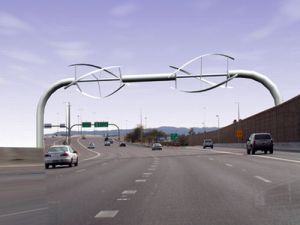Wind power is the conversion of wind energy into a useful form of energy, such as for example using wind turbines in order to make electrical power, windmills for the use of mechanical power, wind pumps for pumping water and for drainage, or sails to propel ships.
Wind power, as an alternative to fossil fuels can be plentiful, renewable, widely distributed, clean, and it also produces no greenhouse gas emissions during operation and uses little land. In other words, wind power consumes no fuel and emits no air pollution.
Compared to the environmental impact of traditional energy sources, the environmental impact of wind power is relatively minor in terms of pollution. The energy consumed to manufacture and transport the materials used to build a wind power plant is equal to the new energy produced by the plant within a few months. While a wind farm may cover a large area of land, many land uses such as agriculture are compatible, with only small areas of turbine foundations and infrastructure made unavailable for use.
Surveys of public attitudes across Europe and in many other countries show strong public support for wind power. About 80% of EU citizens support wind power. For example, in Germany, wind power has gained very high social acceptance with hundreds of thousands of people investing in citizens’ wind farms across the country and thousands of small and medium sized enterprises running successful businesses in a new sector that in 2008 employed 90,000 people and generated 8% of Germany’s electricity.




